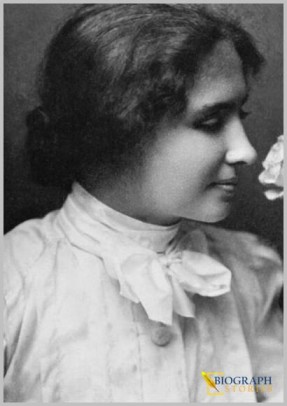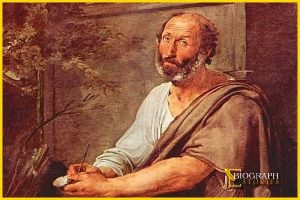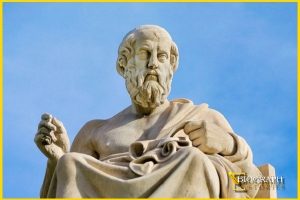
Helen Keller Quick fact:
Born: June 27, 1880, Tuscumbia, Alabama, U.S.
Died: June 1, 1968 (aged 87), Arcan Ridge, Easton, Connecticut, U.S.
Resting place: Washington National Cathedral
Occupation: Author, political activist, lecturer
Education: Harvard University (BA)
Notable works: The Story of My Life
Biography of Helen Keller:
An American lecturer, political activist, and author, Helen Keller, best remembered as the first deaf and blind person to complete a bachelor’s degree in arts. She is an example of dynamism and inspiration for disabled people. Keller is famous for her autobiography ‘The Story of My Life’ and other brilliant essay compilations like ‘Out of the Dark’. Keller wrote many books and essays about socialist and spiritual topics. Various films, television series, and documentaries has inspired by Keller’s life. Keller was the guiding light of ‘American Foundation for the Blind’ during her time and she had raised funds for this. Keller won many posthumous honors. Many hospitals and foundations were named in her honor that support the physically challenged people. Alabama’s ‘The 50 State Quarters’ program awarded her after her death. She was also mentioned in Gallup’s list of ‘Most Widely Admired People of the 20th Century’. In the ‘National Statuary Hall Collection’, a bronze statue of her was added. Across the globe, millions of people inspire by Keller. She serves as a subject matter in works of art and academic exposition.
Helen Keller Childhood of Helen Keller:
On 27 June 1880, Helen Keller was born as Helen Adams Keller, in Tuscumbia, Alabama, USA. He was born to Arthur H. Keller and Kate Adams. Helen’s father was an editor for the Tuscumbia ‘North Alabamian’ and had served as a captain in the ‘Confederate Army’ and her mother Kate Adams had fought for the ‘Confederate Army’ during the ‘American Civil War,’ earning the rank of brigadier-general. Helen was not born deaf and blind. Keller lost both her sight and hearing at just 19 months old. In 1882, according to her doctors her illness was “an acute congestion of the stomach and the brain”. Some experts believe it might have been scarlet fever or meningitis. Helen could only communicate with her family cook’s daughter Martha Washington, as a child. While communicating with her family Helen used 60 home signs. In 1886, in Baltimore Helen’s father accompanied her to seek the help of Dr. J. Julian Chisolm, an eye, ear, nose, and throat specialist. Helen was referred to Alexander Graham Bell who was working with deaf children at the time. Bell introduced Helen and her family to ‘Perkins Institute for the Blind’. Helen had found her instructor in Perkins’ former student Anne Sullivan (who was visually impaired for 20 years). Perkins’ director, Michael Anagnos, personally referred Anne.
Education of Helen Keller:
On March 1887, after arriving at Helen’s home, Anne Sullivan started teaching Helen. Initially Helen was taught how to communicate through hand signs. She was usually photographed in profile because of her protruding left eye. When she turned into an adult both of her eyes were replaced with glass replicas. Helen started attending ‘Perkins Institute for the Blind’ from May 1888. To receive special education from ‘Wright-Humason School for the Deaf’ Helen Keller and Anne Sullivan moved to New York in 1894. Sarah Fuller at ‘Horace Mann School for the Deaf’ also educated them. After returned to Massachusetts in 1896, Helen were enrolled at ‘The Cambridge School for Young Ladies.’ Helen was admitted to ‘Radcliffe College’ in 1900 and lived in Briggs Hall, South House. Helen Keller for efforts were greatly admired by Mark Twain and he helped her greatly in introducing her to ‘Standard Oil’ magnate Henry Huttleston Rogers, who along with his wife funded Helen’s education. At the age of 24, Keller graduated from ‘Radcliffe College’ in 1904 and became the first deaf and blind person ever to earn a Bachelor of Arts degree.
Later Years of Helen Keller:
Austrian philosopher and pedagogue Wilhelm Jerusalem was the first person to assess and discover Helen’s immense literary talent. She close alliance with him. To keep her house Keller recruited Polly Thompson a young Scottish woman. She had no prior experience dealing with deaf or blind people, but she managed well and became a secretary to Helen. Polly always accompanied Helen and became a constant companion in her later years.
Socio-Political Activities of Helen Keller:
Keller was a socialist and believed in radical changes. According to her parliamentary socialism was “sinking in the political bog” that is why she opposed it. Keller joined the ‘Industrial Workers of the World’ in 1912. Along with George Kessler, she found the ‘Helen Keller International’ (HKI) organization in 1915. Helen greatly helped founding the ‘American Civil Liberties Union’ (ACLU) in 1920. Sullivan accompanied her in 40 foreign country trips. Keller met several American presidents from Grover Cleveland to Lyndon B. Johnson during her travels and political visits. Many famous individuals like Alexander Graham Bell, Charlie Chaplin, and Mark Twain became her friend. Because of her concern for blindness and other disabilities, Helen Keller was interested in activism. From 1916 to 1918, she regularly wrote for ‘IWW’. In one of her writings on social activism, she stated that, “I was appointed on a commission to investigate the conditions of the blind. For the first time I, who had thought blindness a misfortune beyond human control, found that too much of it was traceable to wrong industrial conditions, often caused by the selfishness and greed of employers. And the social evil contributed its share. I found that poverty drove women to a life of shame that ended in blindness”. From 1909 to 1921, in support of the working class people, Keller remained a ‘Socialist Party’ member and actively campaigned and wrote many pieces. Keller supported ‘Socialist Party’ candidate Eugene V. Debs in all of her presidential campaigns.
Writing Career of Helen Keller:
Helen wrote 12 books besides writing various articles and all the books were published. ‘The Frost King’ (1891) was one of the earliest known written piece of Helen. There were allegations that Helen had copied the book from ‘The Frost Fairies’ by Margaret Canby. In 1903, her autobiography ‘The Story of My Life’ was published and in 1957, used as the basis of television drama “The Miracle Worker”. Keller was 22 years old at that time. Keller wrote ‘The World I Live In’ in 1908. This book was about her feelings of the world she felt living inside. Keller’s a series of essays on socialism ‘Out of the Dark,’ was published in 1913. ‘My Religion’ was Keller’s spiritual autobiography and published in 1927.
Final Years and Death of Helen Keller: In 1961, Helen Keller was affected by several strokes. She spent the remaining years of her life at her home in Connecticut. President Lyndon B. Johnson awarded her with the prestigious ‘Presidential Medal of Freedom’ on September 14, 1964. This award is regarded as one of the United States’ highest civilian honors. On 1 June 1968, Keller died in her sleep at her home ‘Arcan Ridge,’ located in Easton, Connecticut.








